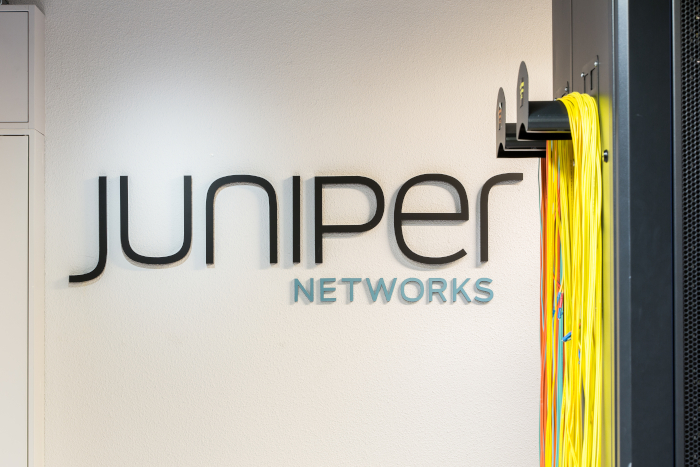 INFRA
INFRA
 INFRA
INFRA
 INFRA
INFRA
Juniper Networks Inc. today debuted a new version of its Marvis chatbot that uses OpenAI LP’s ChatGPT model to ease network troubleshooting tasks.
The ChatGPT integration is rolling out alongside several other software updates, as well as a new Wi-Fi endpoint. According to Juniper, the latter device includes a dedicated sensor for detecting network interference. All the new additions to the company’s product portfolio make use of artificial intelligence models to some extent.
First introduced in 2018, Juniper’s Marvis chatbot helps administrators fix technical issues affecting their company’s corporate network. It can identify the root cause of malfunctions in multiple types of infrastructure, including Wi-Fi access points and the wide area network that links together a company’s office locations. Juniper says that the software can automatically resolve 90% of support tickets related to such infrastructure.
According to the company, the ChatGPT integration that debuted today will enable its chatbot to automate even more tasks. Marvis uses the OpenAI-developed model to help administrators fetch information from Juniper’s product documentation. An administrator can, for example, ask the chatbot how to set up a Wi-Fi access point or what to make of a router’s warning lights.
“AI is the next step in automating tasks that typically require a human IT domain expert, improving how IT teams operate the network with AI-driven tools like Marvis and its conversational interface,” said Juniper Chief AI Officer Bob Friday. “With these latest LLM enhancements, Marvis will provide even more actionable knowledge and be an even more valuable member of the IT team.”
A second integration rolling out in conjunction will enable Marvis to troubleshoot technical issues affecting Zoom calls. According to Juniper, the integration allows its chatbot to pull diagnostics data from Zoom Video Communications Inc.’s cloud backend. Marvis correlates the data with logs from a company’s internal network to troubleshoot technical issues.
Using the integration, an administrator can quickly trace a Zoom error to technical issues such as connectivity disruptions in the user’s Wi-Fi network or excessively high processor utilization. Moreover, Juniper says Marvis can flag errors that repeat themselves over time. The error patterns spotted by the chatbot enable administrators to predict malfunctions that are likely to occur in the future and fix the underlying technical issue.
The enhanced version of Marvis is rolling out alongside a new software offering called Mist Access Assurance. It’s a so-called network access control, or NAC, tool. Such tools are used by administrators to regulate which devices can connect to the corporate network and how.
Historically, NAC products required companies to deploy specialized hardware in their data centers. Juniper says Mist Access Assurance removes that requirement. According to the company, administrators can use a cloud-based management console to specify which users may access what applications and under what conditions.
As part of its feature set, Mist Access Assurance provides support for microsegmentation. That means administrators can allow a device to log into certain systems while blocking connections to the rest of the network. By limiting the number of systems that each employee may access, microsegmentation limits the risk posed by compromised user accounts and devices.
Mist Access Assurance uses AI to automate the task of connecting new endpoints to the network. According to Juniper, the platform is based on a microservices architecture that allows it to support tens of thousands of endpoints and users. It can also integrate with a company’s cybersecurity tools through an application programming interface.
Juniper debuted the latest additions to its software lineup alongside the AP24, a new Wi-Fi access point designed for use at locations such as offices. Its flagship feature is support for the Wi-Fi 6E standard.
Wireless routers transmit data by encoding them into radio signals. Those signals are often sent over different frequencies. The reason is that two Wi-Fi connections established over the same frequency can interfere with another, which decreases download speeds and may cause outages.
Wi-Fi 6E, the version of the Wi-Fi standard that Juniper’s new AP24 endpoint supports, was created to reduce network interference. The standard increases the number of frequencies that wireless endpoints can use to transmit data. As a result, the AP24 can spread Wi-Fi connections across a broader swath of the radio spectrum and thereby prevent them from interfering with one another.
Juniper says the AP24 also reduces the risk of connection errors in other ways. It uses AI to actively search for network inference caused by Wi-Fi connections that share the same frequency. When such interference is detected, the AP24 can switch frequencies automatically.
The AP24 features a seven-square-inch rectangular chassis with three radios. According to Juniper, one of those radios is used as a network interference sensor by the onboard AI. Each AP24 provides up to 3.6 gigabits per second of throughput for Wi-Fi connections.
THANK YOU